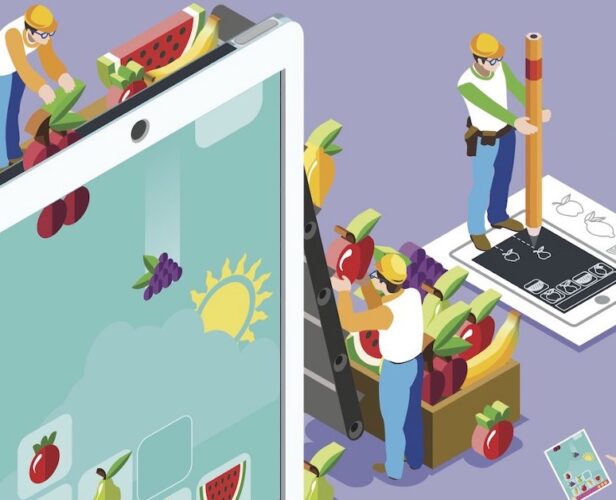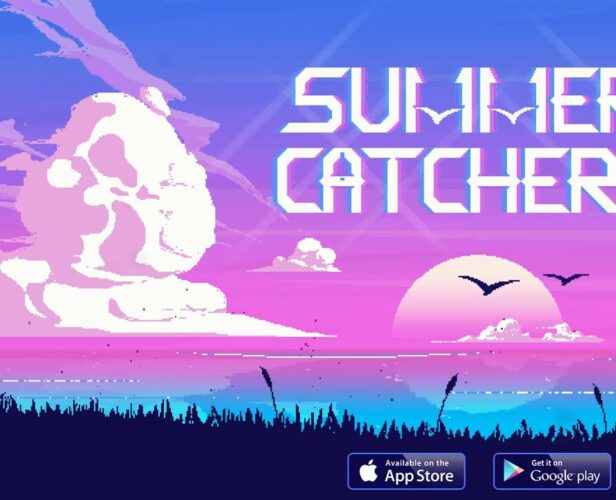Category
Strategies
#Data & Analytics
5 A/B tests to run during your soft launch
As we released A/B testing last month, we thought we’d share a few tips, tricks and ideas on how to make the most of your experiments. So put on your lab coat, fire up the flux capacitor and let’s get to sciencing. If you’re new to A/B testing, it’s a pretty simple concept. Send three variations of your game out into the wild: A, B and a control group. One group of your users sees A, another sees B and the last sees no change at all (your control group). You pit them against each other and see which performs better. It’s survival of the fittest in action. But when should you start your A/B tests? And what exactly should you be testing? Your soft launch is the Goldilocks zone Before you can start testing, you need players. And the...
#Game Design
4 Key Steps to Making a Successful Hyper-Casual game
Hyper-casual games became the hottest trend in the industry when developer Voodoo saw an exponential increase in downloads, which made them the third best performing game developer worldwide in 2017. Only Google and Facebook performed better, and the message was made clear: hyper-casual games are in-demand and can be extremely successful. Since having sustained this popularity, hyper-casual games now generate between $2 billion and $2.5 billion in annual revenue. People across the globe are now spending more time than ever playing games, and perhaps more significantly, they’re also engaging with advertising more – a trend that has played to the strengths of hyper-casual’s unique monetization model. The first quarter of 2020 saw hypergrowth in the hyper-casual vertical, with global installs doubling from December 2019 to March 2020. Users weren’t only downloading more hyper-casual games, they were also playing them more...
#Data & Analytics
Early Testing Strategies to Maximize Your Hyper-Casual Game’s Potential
Editors note: This article was written by Vivian Dong, Senior Publishing Manager at JoyPac. This is based on their most recent webinar, which you can watch here. Testing is the most important part in the whole process of hyper-casual game development. When you have an exciting new game idea, you need to quickly answer the most fundamental questions: Will your idea be appealing enough to draw in players? When they download and play it, will they keep playing it? Will it make money? To answer these questions, you’ll need to start testing as early as possible. We recently hosted a webinar on early testing, along with Gabriel Stürmer, CEO at Clap Clap Games, and Kristina Truvaleva of Business Development & Global Partnerships at ZeptoLab. Here are ten lessons we took away from the webinar. Lesson 1: Test your idea’s marketability...
#Strategies
Time-Saving Tools For Mobile Game Developers
Editor’s note: This post was originally published in 2016. As it’s been a while since we’ve explored what the best tools are that you should be using, we thought we would go ahead and give this post a refresh. Let us know if you think we’ve missed anything important. How can you lower acquisition costs, improve engagement and drive more purchases? Where will you find the time? From basement to studio, game developers manage a growing remit of technical skills… yet the hours in a day stay fixed. For sure, there are thousands of time-saving apps and services that you can make use of – but figuring out which are best is tricky. That’s why we’ve curated a list of the top game development tools, as voted for by game developers, to help steer you in the right direction and free-up your time to...
#Ads & Monetization
Personalizing Offers for In-App Monetization – Lessons from Crazy Panda
At Crazy Panda we publish loads of different types of titles – like World Poker Club (the biggest poker game in the Commonwealth of Independent States), Stellar Age (a mid-core mobile MMO strategy game) and Household (a social networks-based farm game). These games might look pretty different, but they all have one thing in common – in-app purchases monetization, and personalized offers. In fact, at Crazy Panda, personalized offers are between 50% and 80% of our revenue, depending on the product. So we’ve spent a lot of time making sure we get these right. And we’d like to pass on a bit of what we’ve learned to you. We think you can use this for most, if not all, games with in-app monetization. Before we begin Let’s start by nailing down a few technical terms which you may or may...
#Game Design
How Voodoo Diversified and Lowered Game Product KPIs
Editors Notes: This article was originally published on LinkedIn by Youssef Gasmi, Communications Manager at Voodoo. Measurability of value has become a key factor in game publishing, a set of metrics that define what games get made, and which concepts are invested in. Successfully understanding the core strengths and the impact a game will have before it is released is a vital part of the development process in mobile games. This is becoming more important due to the highly competitive nature of the market in 2020. As result, what were once seen as hard and fast rules, namely 55% D1, 22% D7 retention and CPIs below $0.25 are now considered short-sighted. At Voodoo, we have become the leading publisher behind Hyper-Casual games, and we have used a robust testing methodology to establish a game’s retention, and cost per install values,...
#Data & Analytics
How to find Hyper-Casual Success with Rapid Testing and Development
Editors note: This blog was written by hyper-casual specialists, JoyPac. JoyPac specializes in publishing hit hyper-casual games across the globe, and today they have agreed to share their insights into testing and developing hyper-casual games. On Wednesday, May 13th, we’ll be hosting a JoyPac webinar all about making successful hyper-casual games using rapid testing and development. This blog is your preview for the topics we’ll be discussing and some of the advice we’ll be giving. The hyper-casual mobile genre is evolving Hyper-casual mobile games use very simple gameplay and a business model based on in-game advertising. The genre emerged as a sort of backlash or nostalgic revival a couple of years ago. But even though it’s a fairly new genre, it’s already starting to shift. This evolution seems to be branching off into two sub-genres: Ultra-casual games—pushing the simplicity of...
#Game Design
5 Things to Consider When Designing Hyper-Casual Games
Editors note: This blog was written by hyper-casual specialists, JoyPac, and is based on their recent webinar: Design Strategies for Hyper-Casual Game Development. JoyPac specializes in publishing hit hyper-casual games across the globe, and today they have agreed to share their top tips and strategies. To develop a successful hyper-casual game at hyper-fast speed, you need to have a clear production process that focuses on game design. A lot of developers jump into creating hyper-casual games without proper planning and without proper testing. This often leaves them with little idea of how much appeal their game will have, and with a lot of hard work going to waste. We (JoyPac) recently hosted a webinar on this exact subject, along with Umami Games and SuperPlus Games. Based on that webinar, we’ve put together five major things to consider before you set...
#Game Design
A Beginner’s Dilemma: To Start With Casual Games or Mid-Core Games?
Editor’s Note: This post was originally published on LevelUp by Joakim Achrén, the Founder and CEO of Elite Game Developers, a Helsinki-based company that helps gaming entrepreneurs in starting their first games company. One of the earliest and most important decisions founders face when starting a games company is the level of complexity of their first game: should it be casual or mid-core? As an angel investor, every week I get to take a look at pitches from founders and I see them struggling with the same problems over and over again. So, how does one decide where to start and which approach will bring the most successful long-term? Here’s what I’ve learned through my experiences creating a games company and going through countless pitches since. The economics of mobile game ventures After hearing the pitch for a game, I...
#Game Mechanics
Nine Tips when adding Social Elements to your Mobile Game
It seems like forever since the lockdown has been put in place. And with so many people stuck indoors missing their friends and families, it appears that they’ve turned to multiplayer games to connect with others. If you follow this blog, then you know that I not only love playing mobile games, but also finding out what makes them brilliant. And considering what’s happening in the world right now, I thought it would be useful for developers to learn a thing or two from a couple of the best multiplayer games out there. Let’s begin. 1. Too Many Cooks Developer: Finifugu & Friends Launch date: April 2nd, 2020 Price: Free, with in-app purchases Available on: iOS & Android I have been following Too Many Cooks for a long time now. I absolutely love this genre, and in my opinion, there...
#Game Design
Four Benefits of Hyper-Casual Games for the Gaming Industry
Editor’s Note: This post was originally published on LevelUp by Joakim Achrén, the Founder and CEO of Elite Game Developers (a Helsinki-based company that helps gaming entrepreneurs in starting their first games company). You can find the original version of the post here. No, this is not an article about how the hyper-casual market has peaked. This isn’t an article about how poorly hyper-casual games generate value for advertisers who buy ad inventory. And this isn’t an article about how crowded the market of hyper-casual games already is and how big studios are cloning and fast-following all the successful hyper-casual incarnations. No, this is an article about why hyper-casual has positively impacted the gaming industry and why its approach to development should be emulated by other genres. 1. Fast shipping speeds up the learning curve This past fall, I’ve been...
#Strategies
Five Key Lessons from Playing Five Hybrid Mobile Games
Thousands (if not millions) of people have been working from home this month, and in return, gaming has boomed. And with the now announced lockdown in the UK and other countries, we’ll likely see a higher increase in downloads, session length, and session counts. I’ve been working from home for my entire life, and games have been there for me. It seems they’re helping everyone else in the same way now, too. This month, I have specifically taken a look at hybrid games (games that smash together two different genres to make one great game). And if you pay any attention to the mobile gaming industry, then you’ll know that this is a trend that has been getting more traction over the years. So, as usual, I’ve picked out my five favorite games in this genre, and deconstructed them to...
#Data & Analytics
Wildlife Studios: Why Your Studio Needs Data Scientists
Editor’s Note: This article was originally published by Vitor Margato, Senior Data Science Manager at Wildlife Studios. You can read the original version here. Data science has been a hot topic for the past few years, but it’s often hard to understand what data scientists actually do in real companies. They seem to be behind whatever is going on when your favorite streaming app recommends you new songs, or when a ride-hailing app assigns you a driver, but what exactly is their role? In this post, I don’t try to describe how data scientists can help companies in general — I’ll focus on mobile gaming companies, because that’s where I have firsthand experience. Hopefully, some concrete examples will help you form a clearer picture of data science. But first, let me just take a step back to explain why I think those companies absolutely deserve...












